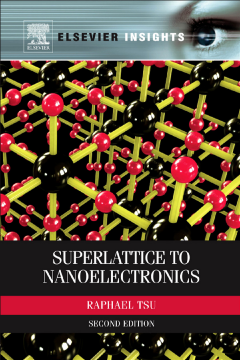
Additional Information
Book Details
Abstract
Superlattice to Nanoelectronics, Second Edition, traces the history of the development of superlattices and quantum wells from their origins in 1969. Topics discussed include the birth of the superlattice; resonant tunneling via man-made quantum well states; optical properties and Raman scattering in man-made quantum systems; dielectric function and doping of a superlattice; and quantum step and activation energy. The book also covers semiconductor atomic superlattice; Si quantum dots fabricated from annealing amorphous silicon; capacitance, dielectric constant, and doping quantum dots; porous silicon; and quantum impedance of electrons.
- Written by one of the founders of this field
- Delivers over 20% new material, including new research and new technological applications
-
Provides a basic understanding of the physics involved from first principles, while adding new depth, using basic mathematics and an explanation of the background essentials
"Tsu follows the development of superlattices and quantum wells from their inception in 1969. He expects readers to have working knowledge in basic mathematics such as complex variables and partial differential equations; some skill in computer programming; and intermediate to advance courses in electromagnetics, quantum mechanics, and solid-state and semiconductor physics. Starting with superlattices, he progresses through resonant tunneling with artificial quantum well states; optical properties and Raman scattering in artificial quantum systems; dielectric function and doping of a superlattice; quantum step and activation energy; semiconductor atomic superlattices; silicon quantum dots; capacitance, dielectric constant, and doping quantum dots; porous silicon; some novel devices; the quantum impedance of a electrons; and why super and why nano." --Reference and Research Book News
"This book is an update of a volume by the same name first published in 2005. It does form one of the most definitive descriptions of the physics underlying these new materials. It is also more than that, because it gives readers a lot of fresh insight to the behaviour of electrons in crystalline solids. Much of this book is ideal for assisting lecturers and tutors in putting across some of the more difficult concepts to advanced students… Overall some of the new additions make fascinating reading because Tsu relates to the reader in a very personal style…." --Contemporary Physics
